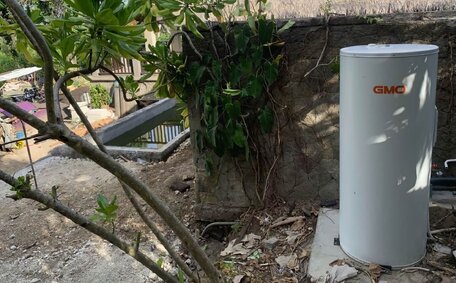
Financial Benefits of Natural Gas
Natural gas offers many financial perks over other energy sources. It burns cleaner and costs less than alternatives, helping lower monthly bills.
Read MoreNumerous reasons might lead to a noisy flush in your toilet, with our Balmain plumbers proficient in resolving such plumbing concerns. Common causes of noisy water during flushing include:
Excessive water pressure or blockages in supply lines frequently cause common toilet issues, such as noises from intense pressure in the tank or bowl. Normally, a toilet should refill within 1 to 3 minutes after flushing, based on its gallons per flush (GPF) rate; taking longer may indicate a problem.
Our emergency plumbers are on call to address issues like gurgling, bubbling, or the persistent toilet squeal, especially if noise continues after flushing due to the fill valve. Our extensive inventory and adept proficiency enable us to expertly navigate a suite of plumbing issues, inclusive of rectifying toilets that issue a foghorn noise during flushes.
The emergence of common toilet noises post-flush is often attributable to a malfunctioning toilet fill valve that makes noise after. Repairing a non-closing fill valve might seem tough, but with straightforward instructions, you can tackle it yourself and quell the noise at each flush.
This issue culminates in water running incessantly into the tank from the water line, resulting in concerns over noises akin to an active tap, particularly imminent post-flushing. If the float switch does not lower after the tank refills, it indicates that the fill valve is staying open, perpetuating unwanted noise.
Rectifying a defective fill valve, commonly the culprit for flushing noise, is often a simple DIY job. In some instances, the toilet can require a full valve replacement.
By simply adjusting the float arm’s height, you can learn to fix the ballcock valve, ensuring it operates effectively when the flush is complete. It’s advised to install a regulated fill valve, which can curb excessive water flow and pressure into the tank.
Begin by turning off the water supply to your toilet, a critical step before installing any water system components or starting repairs. Then try tweaking the float arm to see if this stops the running water noise after flushing by allowing the fill valve to fully close. If this method fails, a brand new fill valve will be required.
Utilising our expertise, we diagnose and remedy malfunctions within ballcock assembly valves causing noises during each toilet flush cycle. Simply get in touch or call our friendly team on 1300 349 338 if you need assistance.
Accumulated debris inside the flush valve can obstruct water flow, resulting in abnormal toilet flushing sounds. We recommend that, as licensed Balmain plumbers, you inspect and clean the flush valve and vent stack annually to prevent unusual sounds.
To clean out the flush valve:
After reassembling, turn the water back on and test the flush to confirm the resolution of the issue. If the noise persists, further investigation is needed, possibly necessitating a professional plumber’s help.
Our experienced Balmain plumbers often encounter issues with misaligned or clogged refill tubes, which can lead to unwelcome flushing noises.
The refill tube channels when water is flowing into the overflow passage for tank replenishment Prior to releasing water toilet filling. Misplacement or blockage of this diminutive tube could be factors in noise when use the toilet is apparent, with sounds ranging from trickles to a notable loud noise.
Here’s how to check and learn more about remedy issues with the refill tube:
If realigning the tube fails to resolve noises during flushing, there could be unseen obstructions further down the tubes. Clearing these obstructions to get rid of the persistent flushing sounds often necessitates professional drain cleaning equipment.
If you need assistance with misaligned or clogged refill tubes causing noise issues, please call our friendly plumbers on 1300 349 338.
Often, a deteriorated or faulty toilet flapper is responsible for unusual noises after flushing. As experienced Balmain plumbers, we frequently replace damaged flappers during your plumbing system repairs.
The flapper, a resilient seal situated at the base of the toilet tank, is linked to the flushing toilet mechanism with a chain. Upon being flushed, the flapper opens, sanctioning water to move from the tank into the toilet bowl. To prevent noise after flushing, the flapper must fully close off the opening of the tank.
However, over time, the flapper may warp, crack, or become misshapen due to heat and mineral deposits from the toilet water. This can also prevent it from fully sealing the flush valve after a flush is completed. This culminates in your toilet making a continuous trickling sound as water flows persistently coming your toilet tank into the bowl, echoing like a running stream.
Replacing a worn-out flapper is an easy DIY fix. Just cut off the water supply, flush to clear the tank, disconnect the old flapper, and fit a new one of the same type. We recommend flappers made of chlorinated rubber (black colour) over thermoplastic (red or orange) for longer durability.
In some instances, the flush lever chain may need adjustment for the flapper to align correctly. Or the flush valve sealing area might require cleaning if minerals have built up. But typically, swapping out the flapper for a new one resolves noisy flush issues.
For professional assistance diagnosing and fixing a faulty toilet flapper, contact our team of plumbers in Balmain today on 1300 349 338. We carry quality flapper replacement parts to quieten noisy toilet flushes.
Natural gas offers many financial perks over other energy sources. It burns cleaner and costs less than alternatives, helping lower monthly bills.
Read MoreChoosing the correct hot water system size involves considering factors like number of household members, number of bathrooms, peak usage times and daily hot water needs per person. Our guide helps determine the right system capacity.
Read MoreHaving trouble with your gas water heater not heating properly? The pilot light may have gone out. Follow our clear guide on relighting your gas water heater’s pilot light in 6 easy steps. Or call the friendly experts at Balmain Plumbing if you need assistance relighting your pilot.
Read MoreBalmain, 2041 NSW
We will call back as soon as possible.




